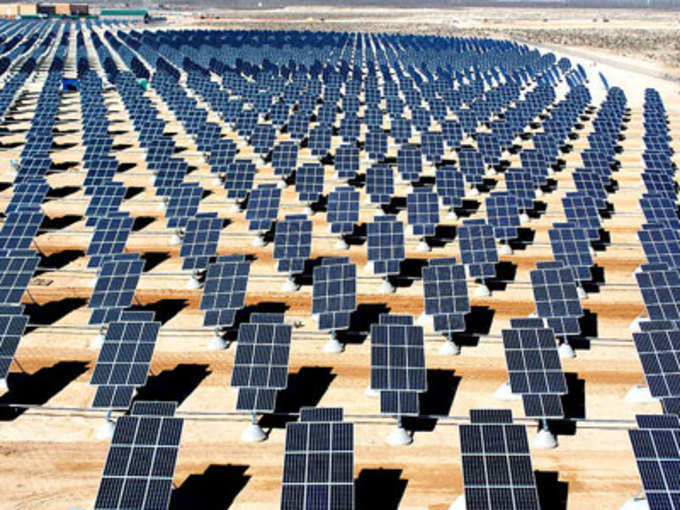
Can India join the ‘green revolution’ by cutting down on fossil fuels and gunning for clean,
renewable energy?
Germany seems to be trying a 100% shift, but whether the renewables can actually replace all fossil fuels is a matter of debate. However, if we want better energy security for rural India, more focus on ‘green power’ could be ideal to reach micro-users and out-of-grid zones. This, in turn, will bring down pollution, as well as fuel prices, a sore point with most Indians. The country’s latest initiatives in the field of ‘green power’ seem to indicate that an
Energiewende or energy transformation has started here as well. Check out what’s powering India towards the green shift.
World’s biggest solar plant in Rajasthan India is building the world’s largest solar plant, sprawled across 23,000 acres near the Sambhar Lake in Rajasthan. The project aims to generate 4 GW (4,000 MW) – about three times the country’s total
solar power capacity and on par with coal-fired mega projects. The new plant in the desert state will be set up and run by a joint venture of 5 public sector utilities, and the first phase should be functional within a couple of years. India currently has a total of 1,761 MW of grid-connected solar capacity, but aims to install around 20 GW by 2022.
Green energy corridor India has put in $7.9 billion to build a ‘green energy corridor’ across 7 states that will feed renewable energy to grid electricity. It aims to connect the southern grid to the
national grid by 2014 and create the single largest transmission grid in the world. The entire corridor will be developed over the next 5-6 years, with support from the
World Bank, the
Asian Development Bank and the
National Electricity Fund. Germany, too, will provide developmental and technical assistance.
More solar rooftops in Gujarat
After implementing a solar park and a canal-based solar power generation plant, Gujarat has taken the lead in solar energy. It is now mulling 10,000 rooftop installations with 40-60 MW of installed capacity over the next 3 years. Interestingly, Germany, the world leader with over 28,000 MW of solar power plants, is almost entirely rooftop.
Wave power for west coast states Tidal energy may not be price competitive yet, but Portugal has already come up with the world’s first commercial
wave energy farm. India is leveraging the option as well, and Gujarat is all set to build the country’s first tidal energy plant. The
state government has already signed an MoU with various bodies for a 250 MW facility at the Gulf of Kutch. The proposed unit will produce energy from ocean tides. Meanwhile,
Maharashtra Energy Development Agency (MEDA) is also eyeing the state’s 720 km long coastline to generate wave energy. The Maharashtra coast has an annual wave potential of 4-8 KW/metre of the length of the wave. But during the monsoon (June-August), it could be as high as 12-20 KW/metre.
Offshore wind farms coming soon The traditional, on-shore wind farms have been there for some time now and
Tamil Nadu currently holds the pole position at 7,162.3 MW. But the
Indian government is now setting up the
National Offshore Wind Energy Authority (NOWA) that will act as the nodal agency for offshore wind projects in the country. NOWA will carry out surveys and resource assessments in Exclusive Economic Zones and also sign contracts with companies for project development in the territorial water.
Image courtesy: Wikimedia Commons
